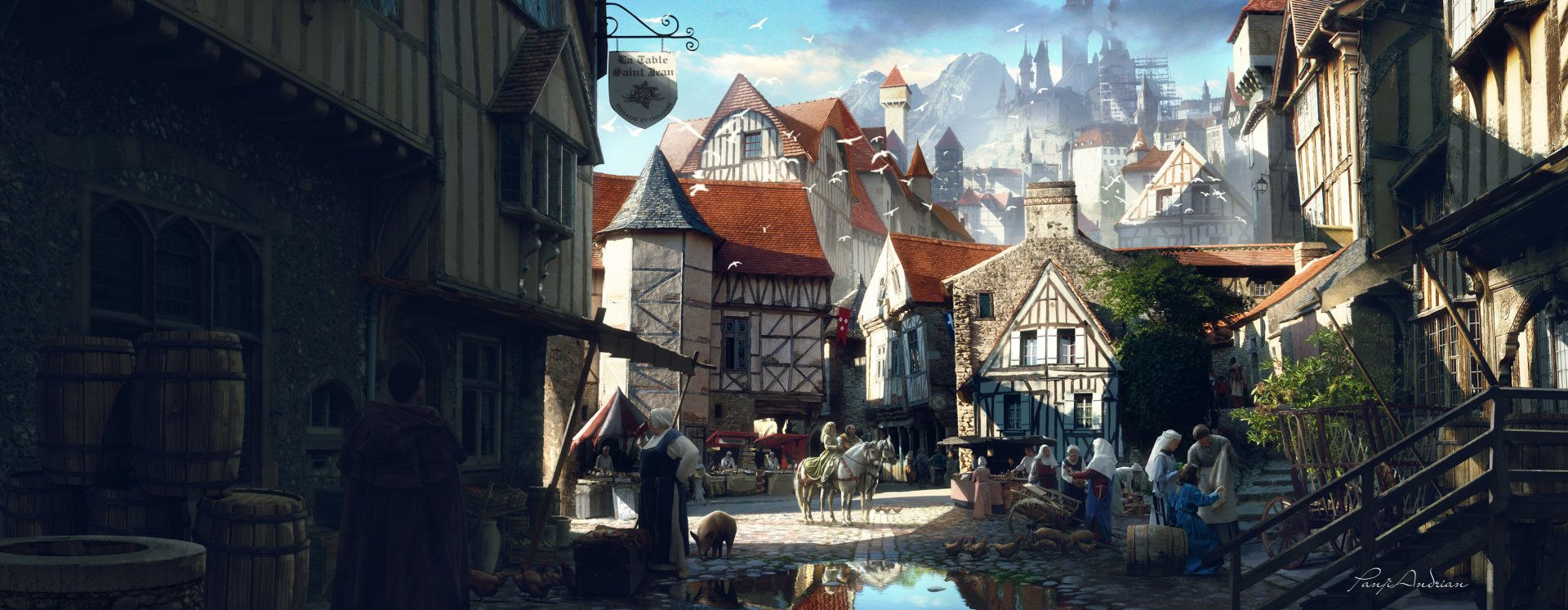
Unit 1: Medieval music
A little history...
-
Middle Ages lasted for ten centuries!!! From the 5th Centur Ito the 15th Century.
-
It started with the Fall of the Roman Empire, and finished with the arrival of Europeans to America.
-
It was a time where the Catholic Church grew strong and the rise of the Islamic Empire.
-
In Arts, two styles were born in this time: The Romanesque Style and the Gothic Style.
-
Despite popular beliefs, Middle Age was a time of prosperity and discoveries.

Sacred music: Gregorian chant

-
The legend said that Pope St.Gregory invented the sacred music in the 4th Century.
-
The Gregorian chant is a monophonic music without instruments.
-
It was sung in Latin and used in the church rites from the 9th Century.
-
There were monks who was in charge of the music in the monastery who had to memorise more that a thousand melodies!
Secular music: Troubadours

-
Music was everywhere during the Middle Ages, not only in church and cathedrals.
-
That popular music was called "Secular music" and it was sung by troubadours.
-
As a difference to sacred music, troubadours could use all kind of instruments.
-
It was really appreciated by noble men and kings.
-
These troubadours used to travel from kingdom to kingdom, spreading news and events .
Nuits Occitanes. Ensemble Céladon
Saltarello. Lithuanian dancers.
Writing music... for the first time
-
In ancient times, it was really hard to find a way to write music. In Ancient Greece, they only wrote a few symbols over the lyrics.
-
These symbols turned into neumes, little marks that help to tune melodies.
-
Through time, musicians started using tetragram and modern staff.
-
Little by little, music notes shape transform into a rhythm value.

A lot of instruments were created during Middle Ages, but some of them were created before. In the Middle Ages, there weren't any patterns or blueprints to make instruments, so each musician had to build them by their own. No instrument has survived from that time, so we know how those instruments were because of paintings and sculptures. Some instruments were:
Fiddle or Vielle
The medieval fiddle emerged in 10th-century Europe, deriving from the Byzantine lira. It was a bowed string instrument, characterized for the use of a bow to play over the strings.
Through time, this instrument will evolve to the violin family.
Citole
The Citole, was a string musical instrument, closely associated with the medieval fiddles, and commonly used in the 13th Century. Like the modern guitar, it was manipulated at the neck to get different notes, and picked or strummed with a plectrum (the citole's was long, thick, straight and likely made of ivory or wood).
Gittern
The gittern was a relatively small gut strung round-backed instrument that first appears in literature and pictorial representation during the 13th century in Western Europe (Iberian Peninsula, Italy, France, England). It is usually depicted played with a quill as we can see clearly beginning in manuscript illuminations from the thirteenth century. It was also called the guitarra in Spain, guiterne or guiterre in France, the chitarra in Italy and quintern in Germany.
Hurdy Gurdy
The hurdy-gurdy is a stringed instrument that produces sound by a hand crank-turned, rosined wheel rubbing against the strings. The wheel functions much like a violin bow. Melodies are played on a keyboard that presses tangents—small wedges, typically made of wood—against one or more of the strings to change their pitch.
It was commonly used in Occitan, Catalan, Cajun French and contemporary Asturian, Cantabric, Galician, and Hungarian folk music.
Instruments
El Camino de Santiago

-
It is said that during Middle Ages, the corpse of Jacob (Santiago) one of Jesus' disciples was found in north Spain. It was found after a star rain, so that land was called "Land of the starts" (Compos Stellae = Compostela).
-
This event made a lot of people try to pilgrimaged to Galizia, to see the miracle.
-
People from all over Europe share knowledge and experience in this pilgrim.
-
In Spain It can be found one of the first books written because of this path, and includes music from that time. The book is known as "Codex Calixtinus"
Score: Cantiga 100


